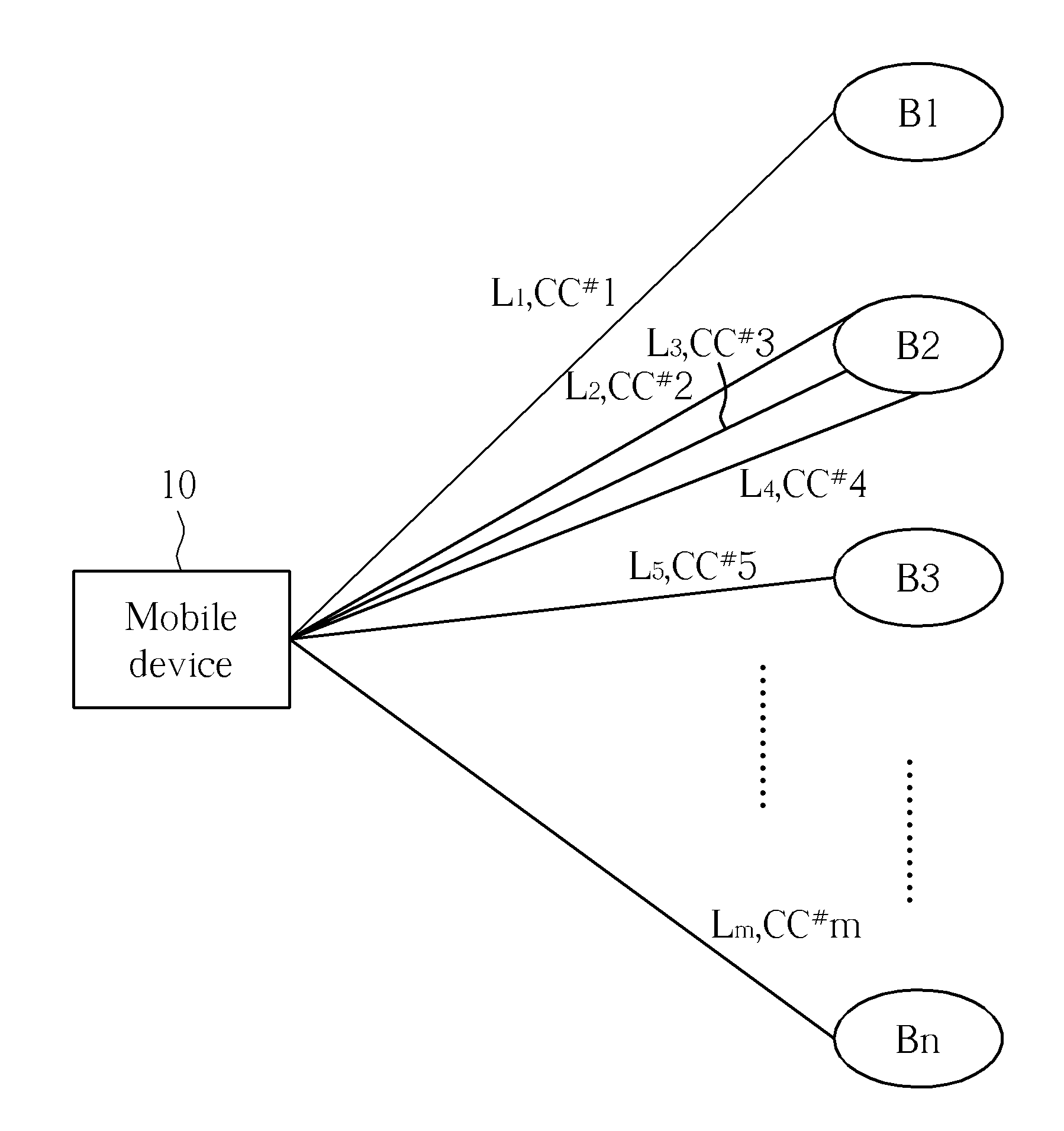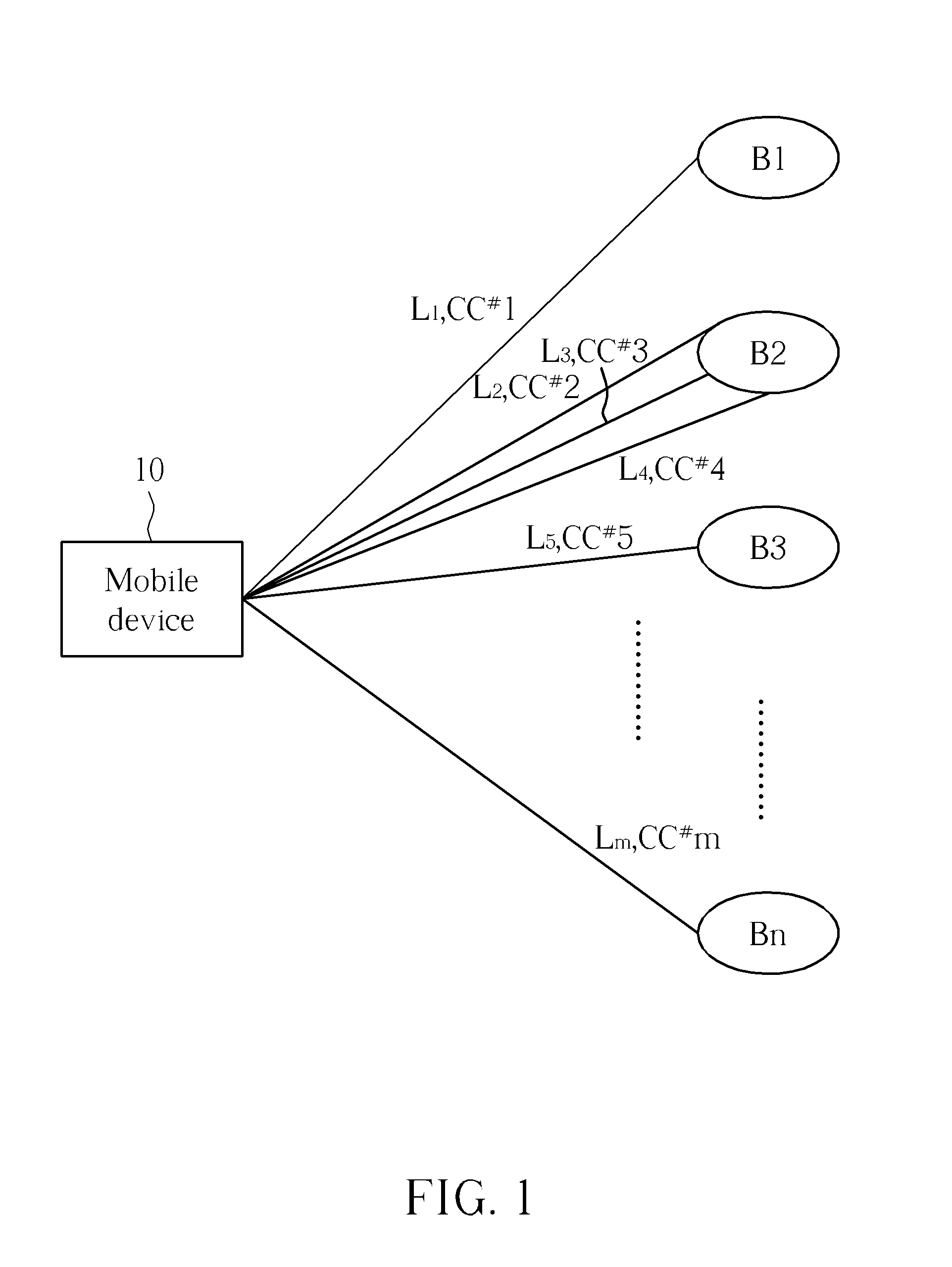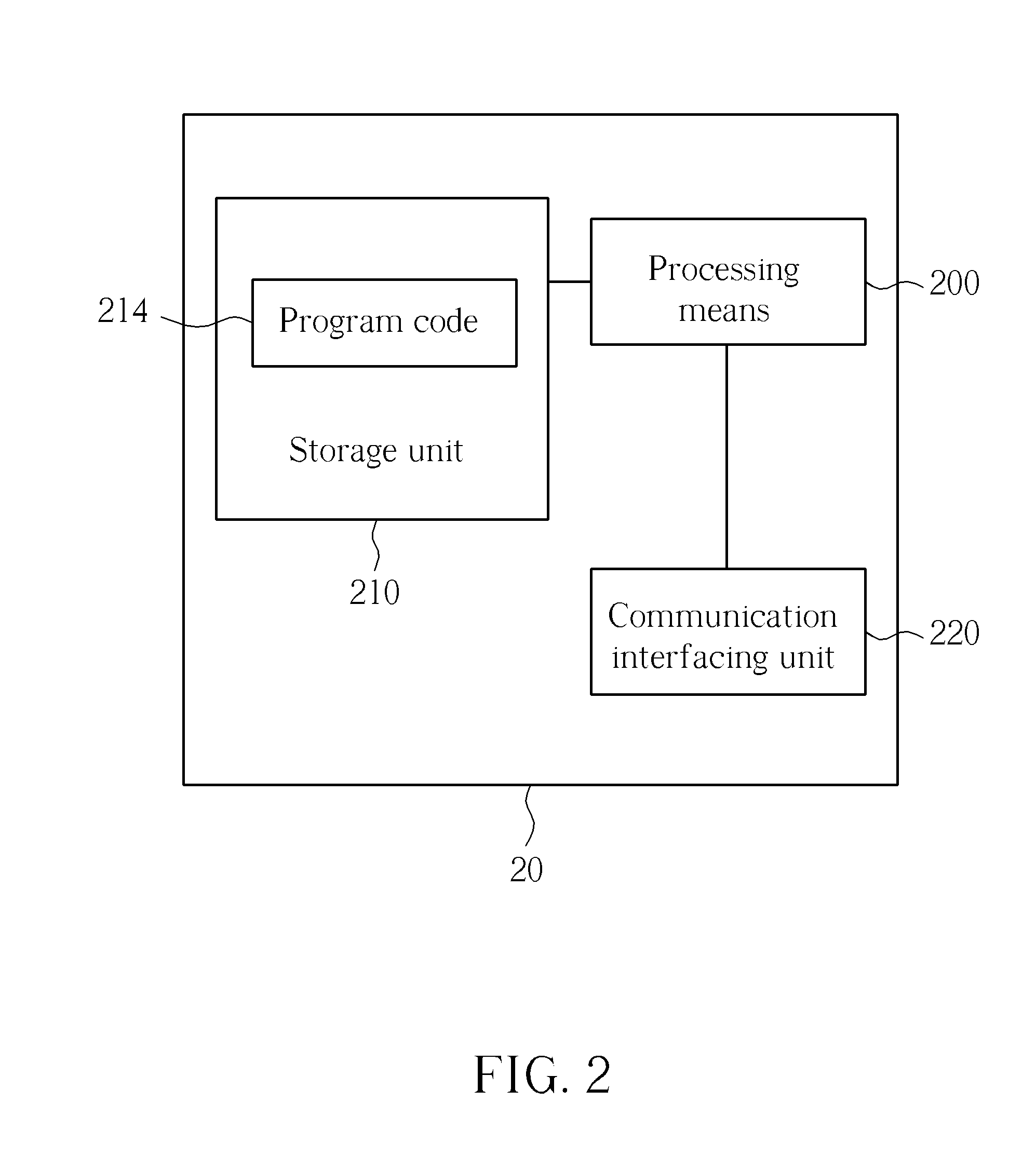Method of Handling Component Carrier Activation and Deactivation and Communication Device Thereof
a technology of component carrier and activation method, which is applied in the direction of power management, wireless commuication services, instruments, etc., can solve the problems of harq process retransmission loss, harq retransmission loss, and the inability to receive uplink resources before deactivation of the component carrier
- Summary
- Abstract
- Description
- Claims
- Application Information
AI Technical Summary
Benefits of technology
Problems solved by technology
Method used
Image
Examples
first embodiment
[0066]Take an example based on the process 40. Please refer to FIG. 5(A), which is an activation-deactivation time diagram according to a Briefly, only two component carriers cc#1 and cc#2 are presented. In FIG. 5(A), component carrier cc#1 is a primary component carrier (PCC) and is activated at all time, whereas component carrier cc#2 is a secondary component carrier (SCC) and is activated when a message for component carrier activation is received. Note that, the component carrier activation message for activating the component carrier cc#2 may be transmitted on either the component carrier cc#1 or the component carrier cc#2. Once the component carrier cc#2 is activated, the UE starts a deactivation timer. For uplink transmission, the UE transmits a HARQ packet to the network (i.e. an E-UTRAN, or an eNB), so that the network responses a HARQ feedback (e.g. HARQ ACK / NACK) through a Physical Hybrid ARQ Indicator channel (PHICH). After that, the UE performs a HARQ process retransmi...
second embodiment
[0067]Besides restarting the deactivation timer, the UE can start a specific timer (hereafter called an extension timer), which provides a period time for component carrier activation. Please refer to FIG. 5(B), which is an activation-deactivation time diagram according to a In FIG. 5(B), the UE starts the extension timer T1 for extending activation time of the component carrier cc#2 when the PHICH (or HARQ ACK / NACK) is received. Therefore, the HARQ process retransmission may be performed on the component carrier cc#2 during the extended activation time, so as to finish the HARQ process retransmission. Once the deactivation timer and the extension TIMER T1 expire, the component carrier is deactivated.
third embodiment
[0068]Please note that, in order to prevent redundant timer start or restart, a prohibit timer is provided. Please refer to FIG. 5(C), which is an activation-deactivation time diagram according to a The UE may start a prohibit timer when the deactivation timer is started. During duration of the prohibit timer, the UE does not restart / start the deactivation timer / extension timer T1 to extend activation time of the component carrier cc#2 (e.g. when the PHICH is received), so as to avoid redundant timer start or restart. Conversely, the UE may extend activation time of the component carrier cc#2 by restarting / starting the deactivation timer / extension timer T1 when the prohibit timer expires and the PHICH is received.
PUM
 Login to View More
Login to View More Abstract
Description
Claims
Application Information
 Login to View More
Login to View More - R&D
- Intellectual Property
- Life Sciences
- Materials
- Tech Scout
- Unparalleled Data Quality
- Higher Quality Content
- 60% Fewer Hallucinations
Browse by: Latest US Patents, China's latest patents, Technical Efficacy Thesaurus, Application Domain, Technology Topic, Popular Technical Reports.
© 2025 PatSnap. All rights reserved.Legal|Privacy policy|Modern Slavery Act Transparency Statement|Sitemap|About US| Contact US: help@patsnap.com



